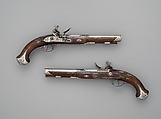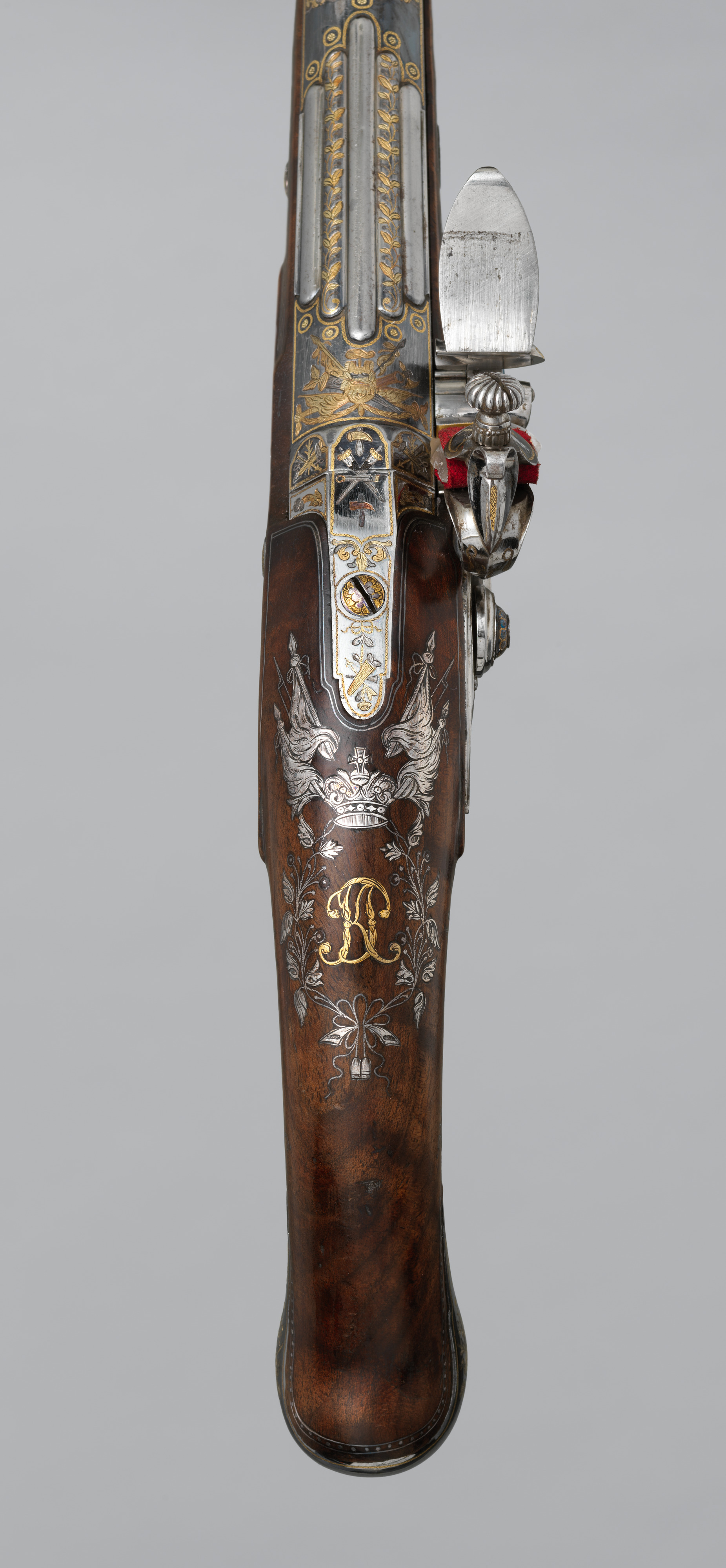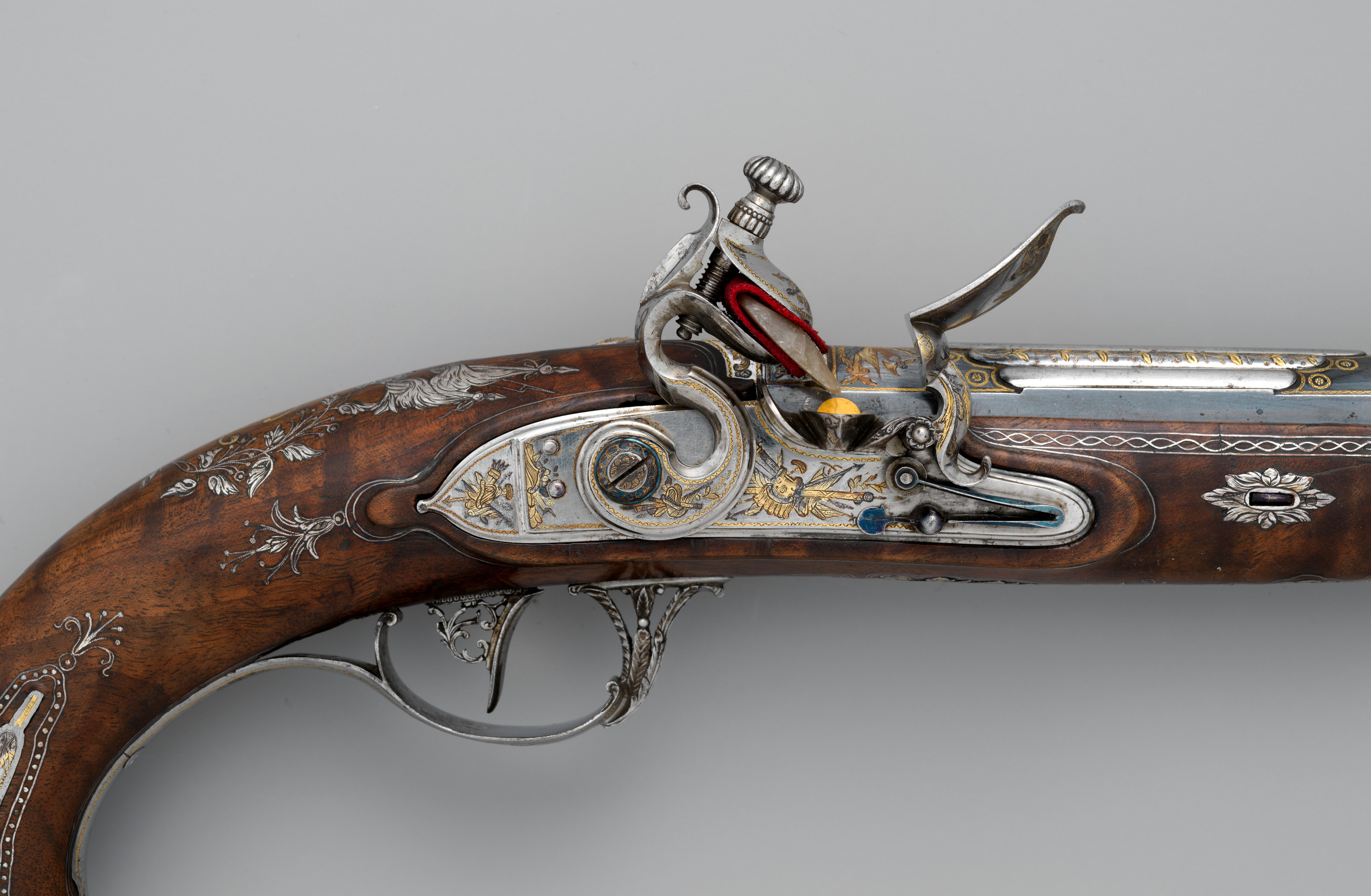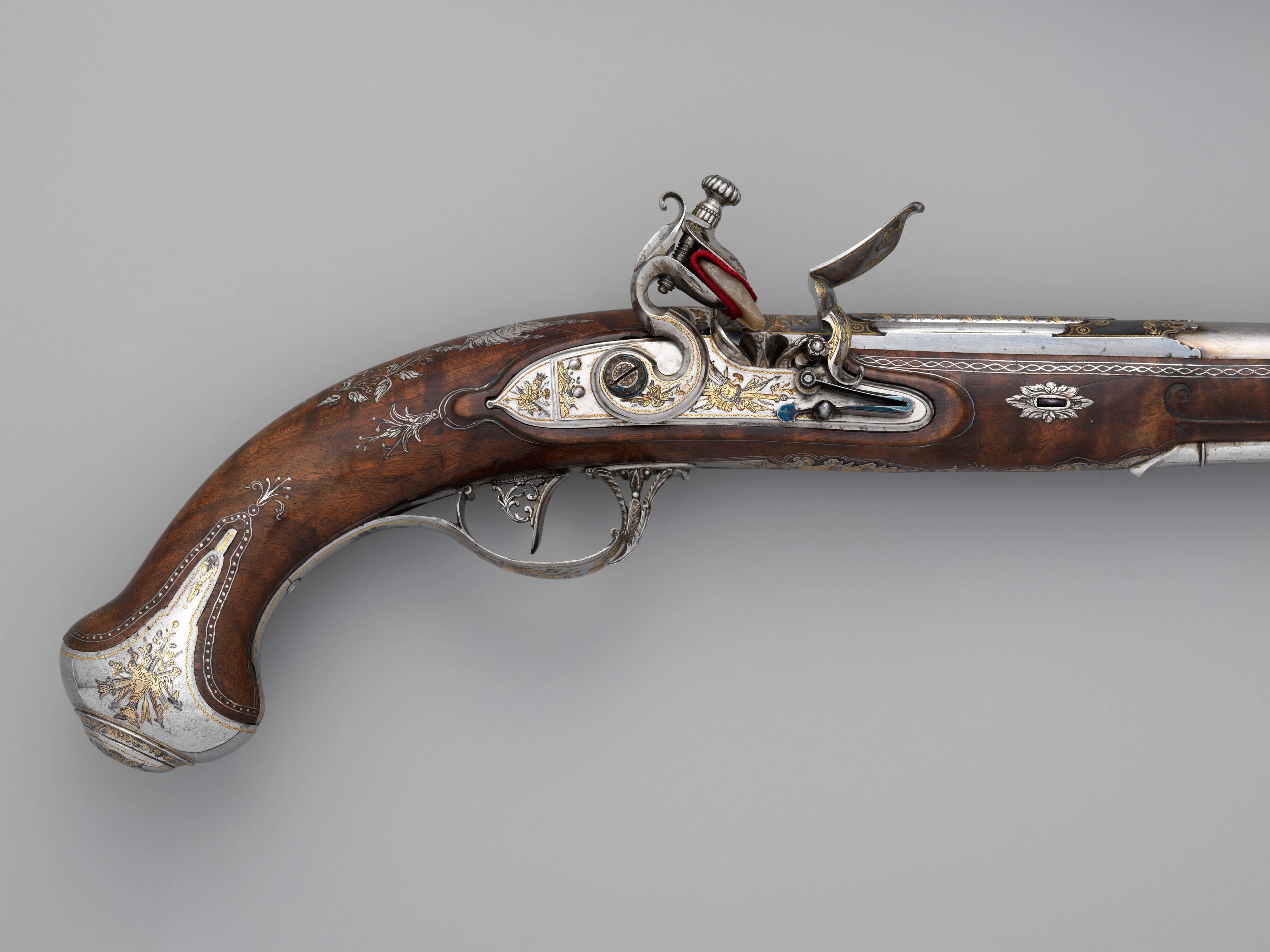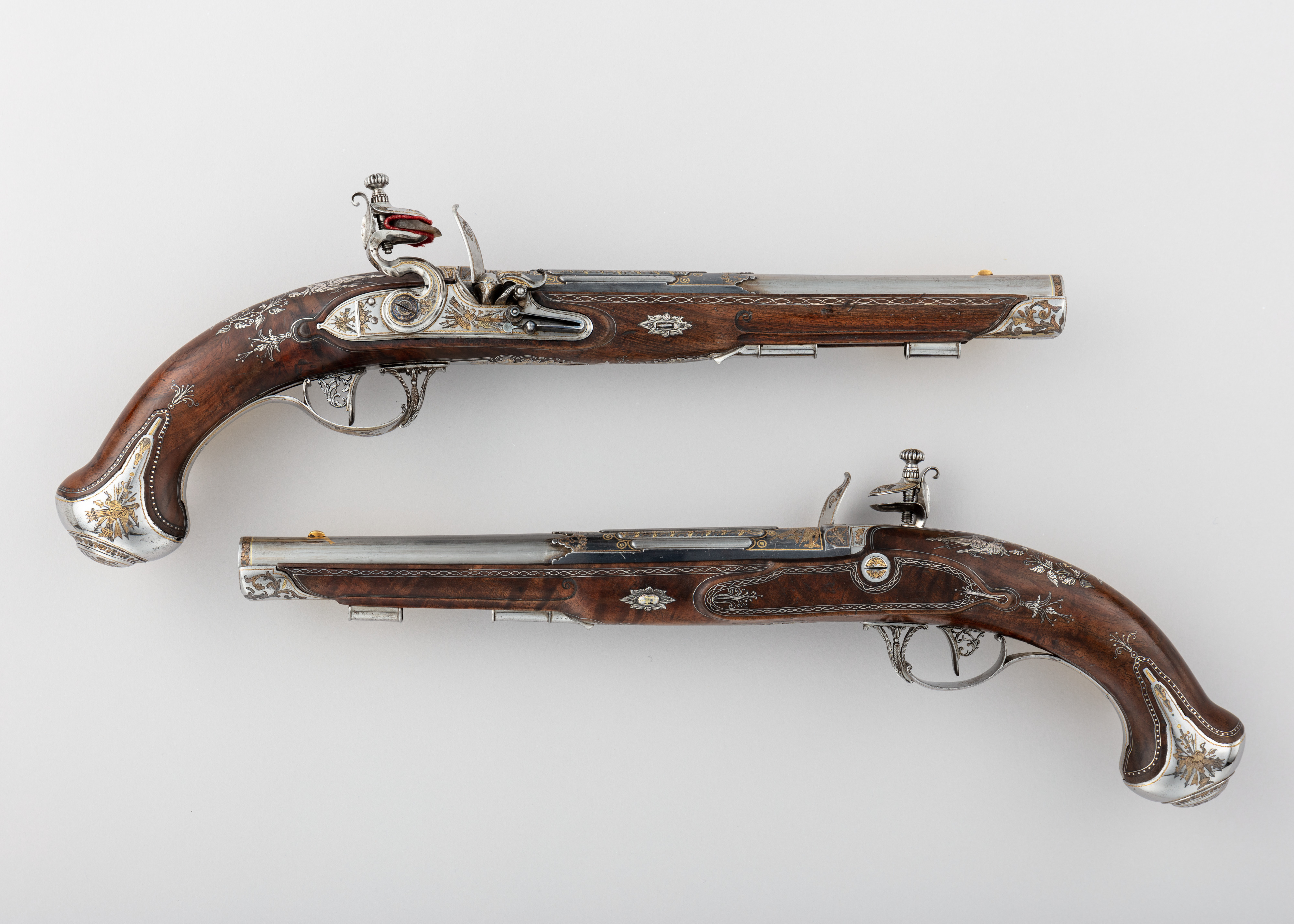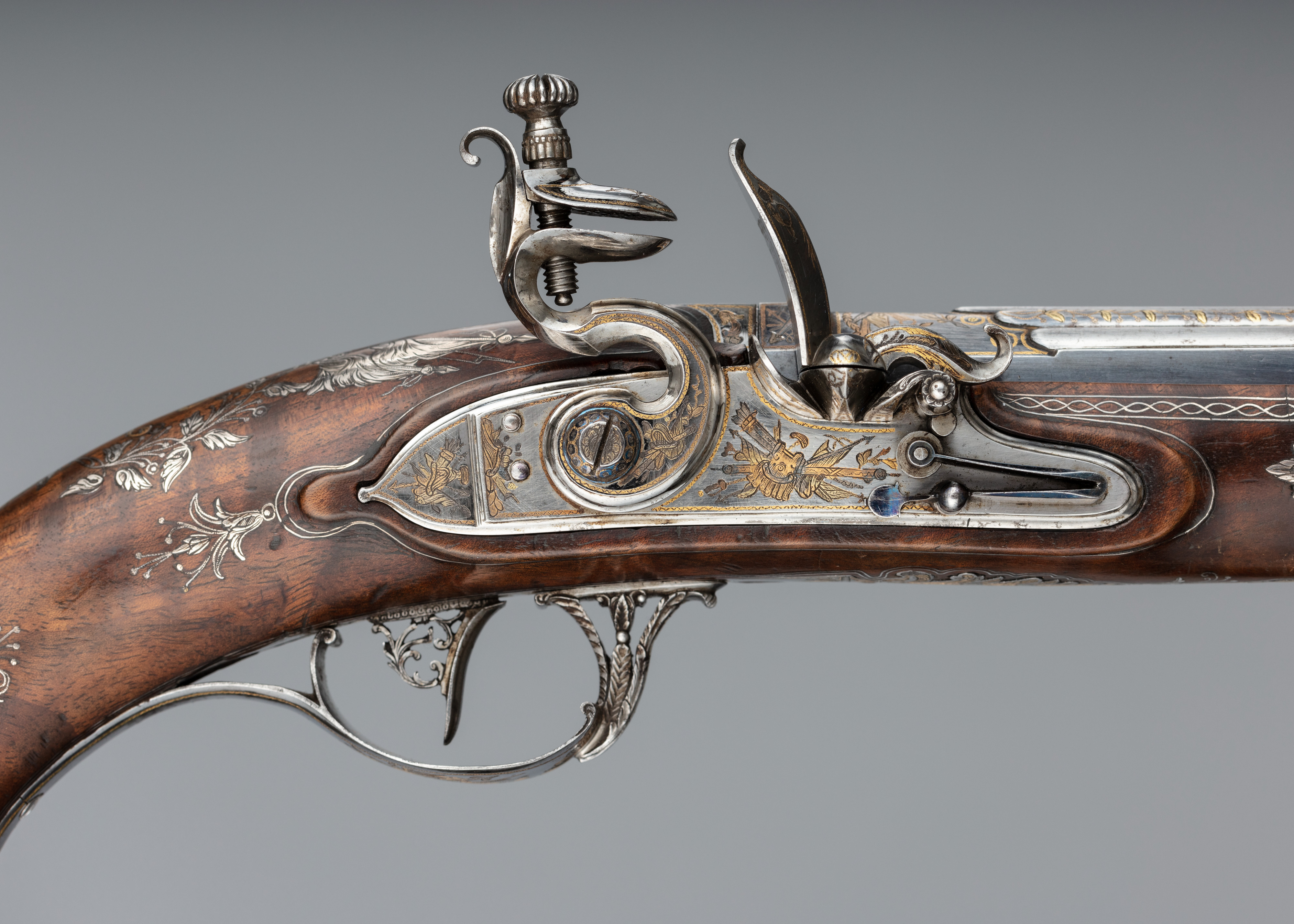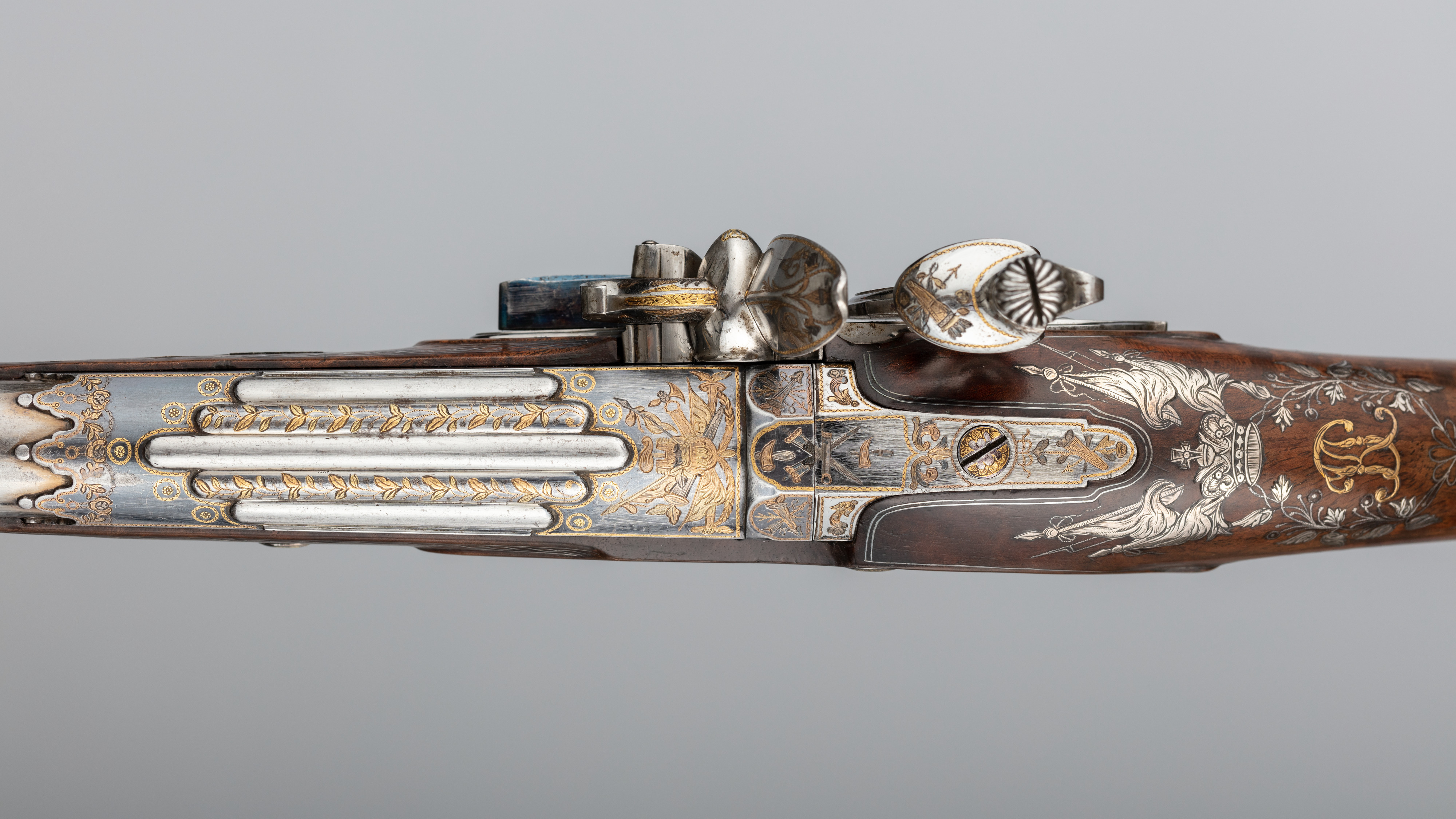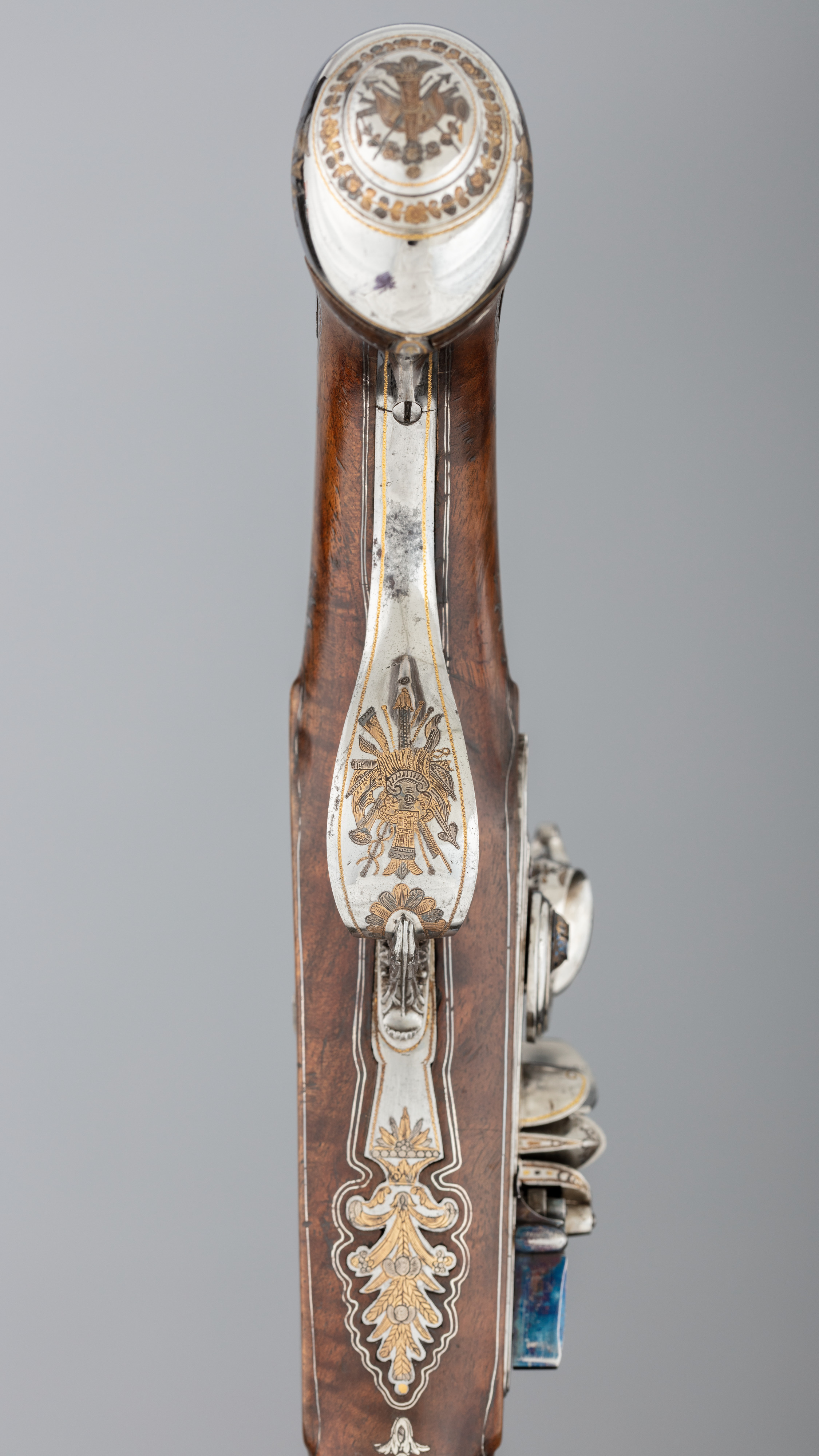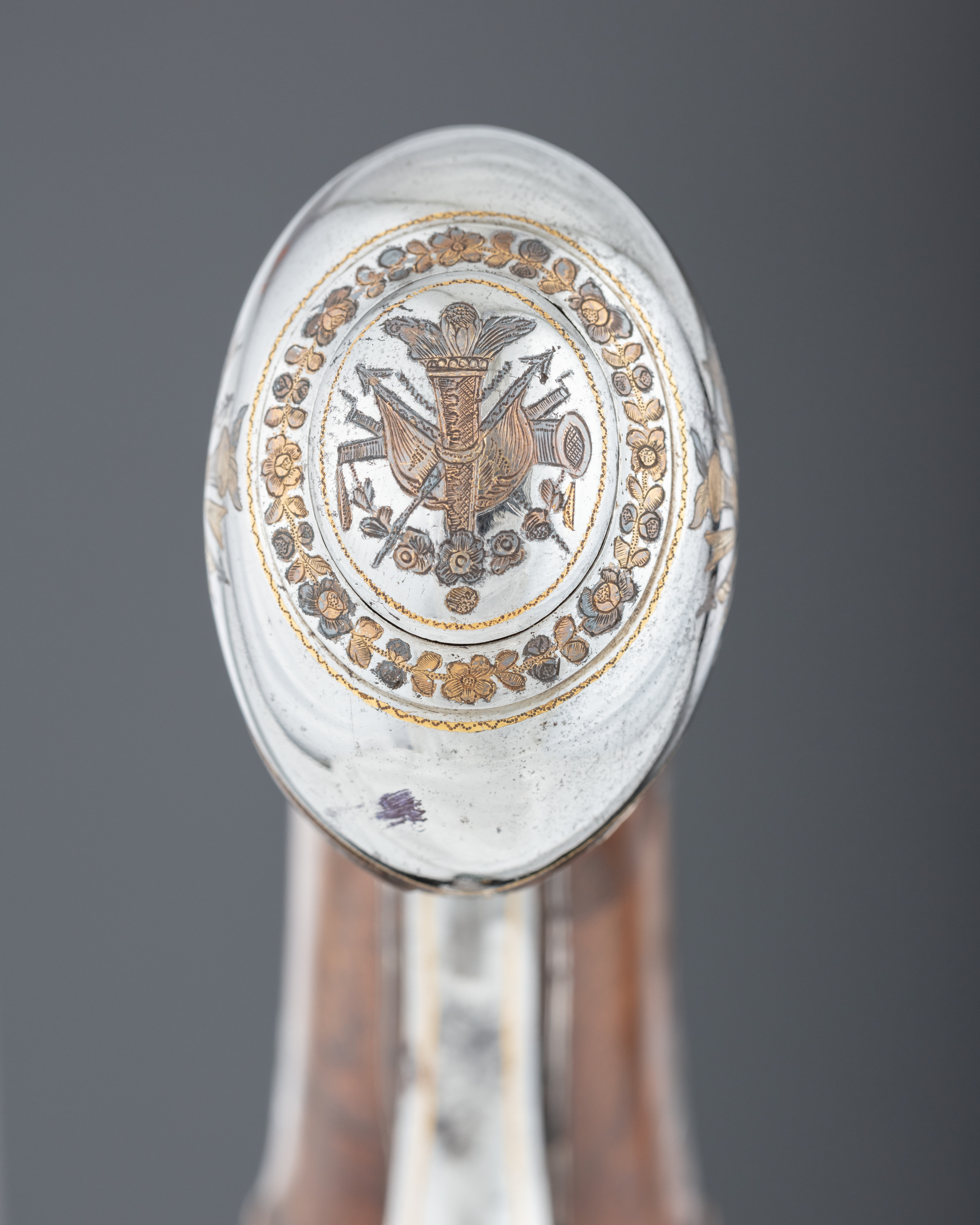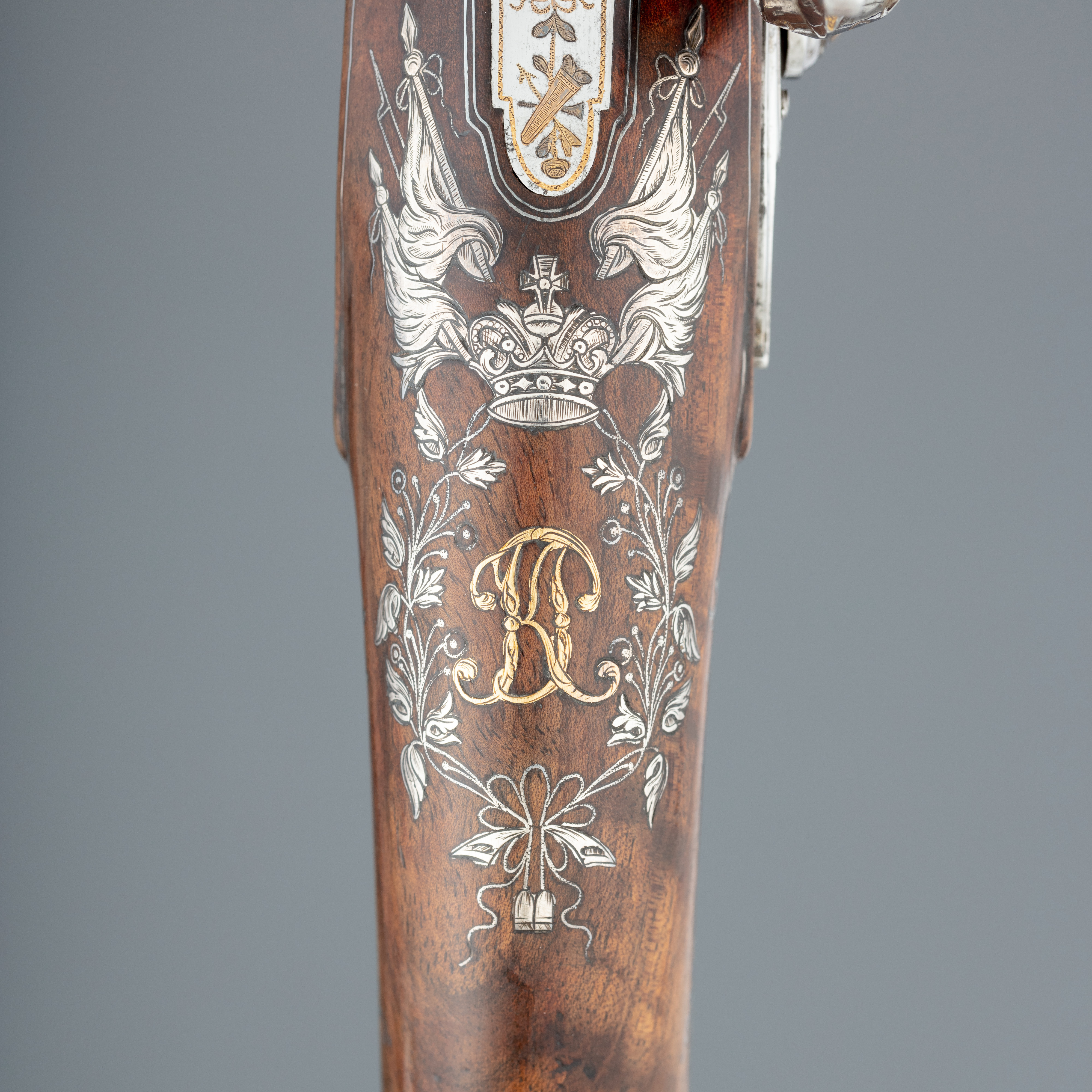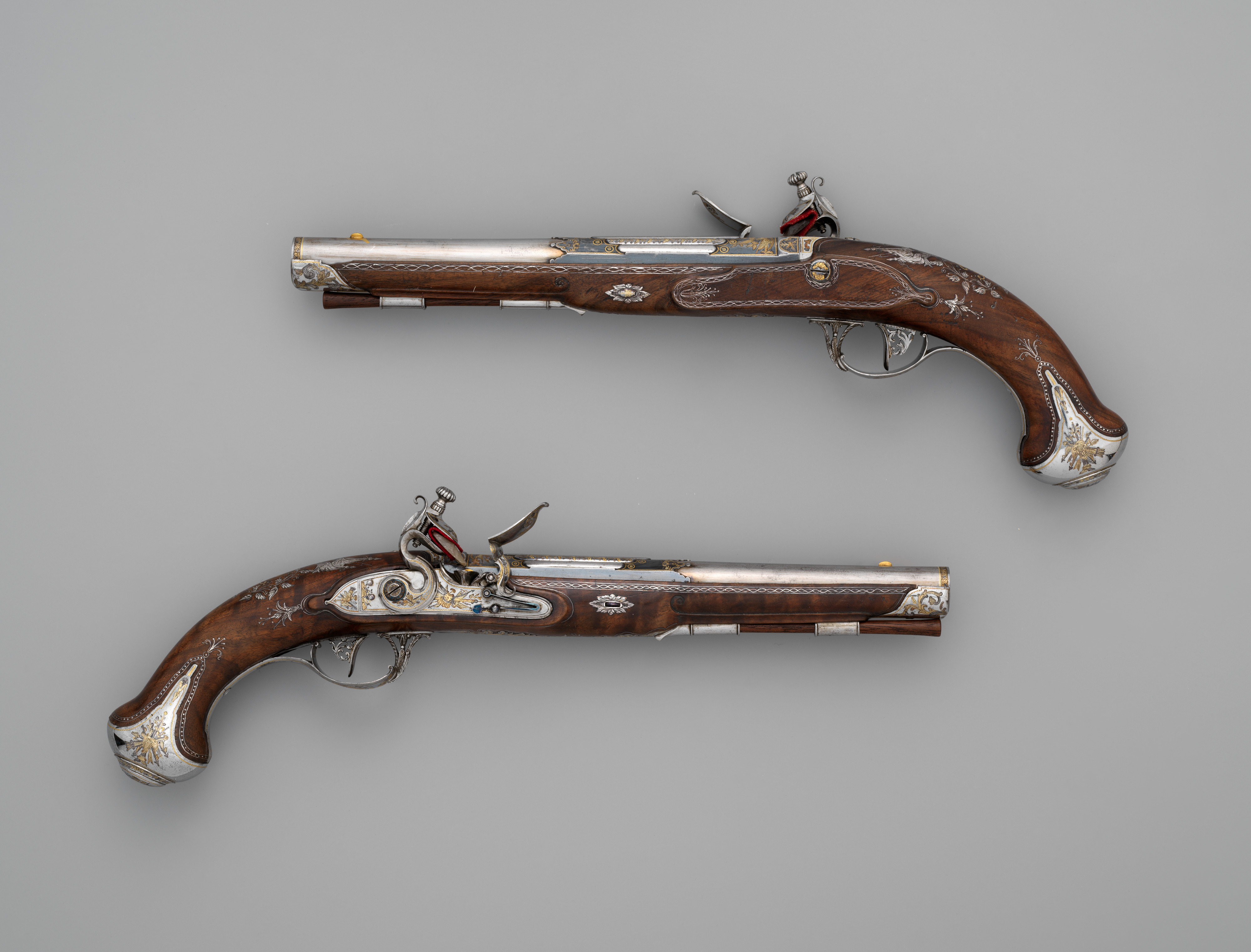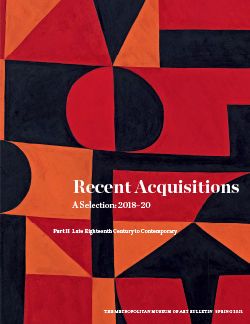Pair of Flintlock Pistols Made for Grand Duke Constantine Pavlovich of Russia (1779–1831)
Manufacturer Tula Arms Factory Russian
These pistols form part of a series of specially designed deluxe firearms made by the Tula Arms Factory for presentation to Emperor (Tsar) Alexander I and his three brothers on the occasion for Alexander’s coronation in 1801. Each of the four siblings received a garniture, or set, of five elaborately embellished hunting arms comprising a smoothbore fowling piece, rifled carbine, blunderbuss, and pair of pistols. These firearms are unique among Tula arms with regard to their neoclassical design, technical sophistication, and complex and distinctive embellishment. With this gift the Tula factory not only paid homage to its imperial patrons, but also showcased the technical expertise and virtuoso craftsmanship for which it was famous. The coat-of-arms of the Tula factory is prominently displayed on each weapon.
Made for Grand Duke Constantine, these pistols epitomize the most refined expression of Russian neoclassical arms. The decoration, though abundant, is nevertheless considerably more restrained than that of earlier rococo examples. The blued or highly polished steel surfaces, highlighted with delicate gilt and silver-inlaid ornament, are also characteristic of Tula metalwork. The silver ornament in the stock is essentially reduced to framework around the mounts, with the exception of the bold display of trophies and imperial crown surrounding the gold monogram of the owner. The pierced and chiseled treatment of the trigger and trigger guard, very rarely found on Tula firearms, is nevertheless an unmistakable feature of furniture and decorative art objects produced in Tula.
Due to rights restrictions, this image cannot be enlarged, viewed at full screen, or downloaded.
This artwork is meant to be viewed from right to left. Scroll left to view more.
